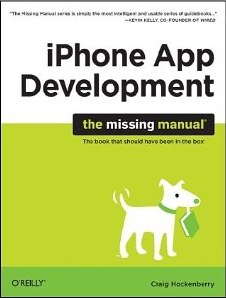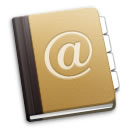Everyone saw the focus, the insistence, and the scorn for bozos – for people who were happy enough to get by. What people always missed about Jobs at Apple was the agile mind, able and eager to shift from the inside to the outside and back again.
Apple was not saved by design or innovation. What saved Apple is the constantly iterated shift from design to execution, from surface to depth, from style to science and back again.
Jobs learned from bad times but did not let bad times shape him. When he was kicked out as a dreamy incompetent, he went elsewhere, made a couple of new fortunes, came back, and kept dreaming. When the press assumed that Microsoft would simply discontinue Office for Mac and let someone buy the wreckage at the fire sale, Apple stood on a hill before the setting sun and shook its fist at the heavens and vowed that it would never be hungry (and powerless) again. But Apple did not become a defensive shell or an outlaw.
The original iMac, Steve’s machine, was Bondi Blue. Everything else was business beige. A couple of months later, you could tell which galleries on Santa Fe’s Canyon Road were doing well because the prosperous galleries all had those Bondi Blue iMacs. Some were sitting on 17th century Spanish oak, some on polished steel, and some on two planks of raw pine thrown across a couple of old trestles – depends on the gallery – but if they were selling art, they were buying that iMac.
Apple built the iMac into a nice little business, and then wrecked its own business with laptops. Same thing with MP3 players: people ridiculed the new iPod as underpowered and overpriced, then watched in amazement as it consumed the entire sector. And watched again as it fought off every challenge until, once again, Apple demolished that market with a new kind of phone.
Mac OS was clearly a better UI package than its competitors. Rather than refine it, Jobs replaced it with Mac OS X. This required tons of work and a vast leap of faith, since a company that had always rolled its own foundations now learned to depend on Unix and Postscript.
The dramatic shifts – abandoning floppies, abandoning Pascal and OpenDoc and Java, embracing virtual memory, abandoning the PowerPC, abandoning CDs – masked a steady reengineering of everything. Compare today’s MacBook Air to the original. They look pretty much the same, but the new one isn’t just faster. It feels better: more solid, more durable. Remember hinge kits? Hinges don’t wobble anymore. (A visible side effect of the process is the maxim that every new Apple laptop has a new video connector.)
After Apple had brought color to computers and everyone else was trying to slap juicy colors on their cases, Apple seized white. Dell and HP kept black for themselves. This was pure style, but Apple has exploited that blunder for a decade.
Look at the Apple stores. The analysts thought they were the desperate indulgence of a washed-up hippie who didn’t understand business, and they turned out to make heaps of money. But they’re not just distribution and maintenance centers. Everything is geared to say, you can do stuff with Apple stuff. You. MicroCenter and Fry’s were exciting with their racks of components and motherboards, but Apple put Grandma right in the center of the store and – look at that! – you were standing there learning stuff about video production, along with Grandma.
Everyone knew that companies should build on their core competency. What does a boutique computer company know about retail? Apple went about it like building a new system, with a fresh package and style and innovative systems in the background. (Everyone thinks Lion is about the scroll bars, but blocks and Grand Central Dispatch are going to change everything in ways that matter a lot more than scrolling.)
Have you ever seen an Apple Store employee standing around, looking bored, waiting? That’s execution. It can’t have been easy to see why this is important, to convince people it matters, even to make it possible. It’s not something you can instill by walking around and asking programmer A whether programmer B is really a bozo, which was Steve’s original management skill. This sort of polish goes all the way down. You never see a pile of Apple products in the stores: the piles are in the back, out of sight. You never see money. Do they even take cash? There’s no cashier and no cash register.
It’s still going on, and the analysts still can’t follow the shift from outside to inside. The iPhone 4 was outside: new design, new display, new camera. Now, we do the inside, with a new fast processor. “Who needs a fast processor?” they wonder. You need it to do stuff, because phone software has only a few seconds to do what you have in mind. (Desktop programs like Photoshop can take minutes to load, but if an iOS app doesn’t get itself loaded in five seconds, the system assumes it’s run amok and throws it in the drunk tank.) And what do you want your phone to do? Well, Knowledge Navigator is a nice start, isn’t it? If you want to do speech recognition, you need a separate thread and a separate core – and look what we have here? GCD to manage the cores, and mobile processors with multiple cores and decent battery life. The action this year is inside.
And down the road, when everyone is finally looking at the inside again, you’ve got to think that Tim will remind us again that there’s one more thing...








